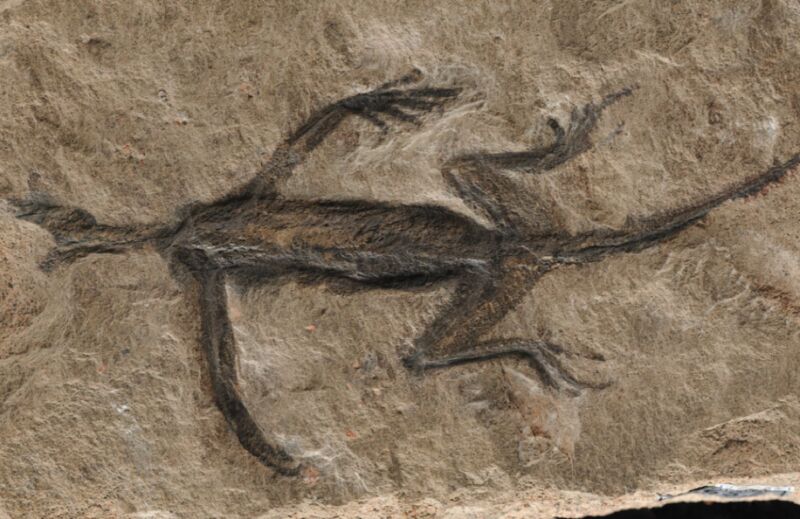It’s a fake: Mysterious 280 million-year-old fossil is mostly just black paint

Enlarge / Discovered in 1931, Tridentinosaurus antiquus has now been found to be, in part, a forgery. (credit: Valentina Rossi)
For more than 90 years, scientists have puzzled over an unusual 280 million-year-old reptilian fossil discovered in the Italian Alps. It’s unusual because the skeleton is surrounded by a dark outline, long believed to be rarely preserved soft tissue. Alas, a fresh analysis employing a suite of cutting-edge techniques concluded that the dark outline is actually just bone-black paint. The fossil is a fake, according to a new paper published in the journal Paleontology.
An Italian engineer and museum employee named Gualtiero Adami found the fossil near the village of Piné. The fossil was a small lizard-like creature with a long neck and five-digit limbs. He turned it over to the local museum, and later that year, geologist Giorgio del Piaz announced the discovery of a new genus, dubbed Tridentinosaurus antiquus. The dark-colored body outline was presumed to be the remains of carbonized skin or flesh; fossilized plant material with carbonized leaf and shoot fragments were found in the same geographical area.
The specimen wasn’t officially described scientifically until 1959 when Piero Leonardi declared it to be part of the Protorosauria group. He thought it was especially significant for understanding early reptile evolution because of the preservation of presumed soft tissue surrounding the skeletal remains. Some suggested that T. antiquus had been killed by a pyroclastic surge during a volcanic eruption, which would explain the carbonized skin since the intense heat would have burnt the outer layers almost instantly. It is also the oldest body fossil found in the Alps, at some 280 million years old.




